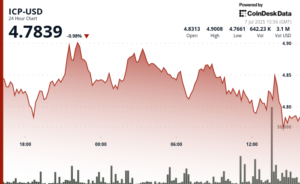Shenzhen Authorities Warn Against Fraudulent Digital Asset Investment Schemes
In a significant development, authorities in Shenzhen have issued a stern warning to residents regarding fraudulent investment schemes linked to digital assets and stablecoins. On July 7, the city’s Office of the Municipal Task Force for Preventing and Combating Illegal Financial Activities released a statement urging individuals to exercise caution when approached by deceptive platforms masquerading as legitimate crypto investment opportunities. As interest in digital currencies grows globally, it appears that bad actors are taking advantage of the public’s enthusiasm by promoting misleading and risky financial products under the guise of established concepts like “stablecoins,” “virtual currency,” and “digital assets.”
These fraudulent organizations have been particularly effective in utilizing flashy advertising tactics to attract unsuspecting victims. According to the task force, many of these scams include pyramid schemes, gambling operations, acts of fraud, and money laundering. The officials strongly emphasized that these activities breach China’s robust financial regulations. Most of these illicit enterprises operate without licenses and illicitly collect funds from the public. Consequently, individuals who invest in these fraudulent schemes risk facing significant financial losses, as there is no protection for their investments. The local government is urging potential investors to refrain from engaging with offers that promise unrealistic returns and to report any suspicious platforms immediately.
In the official notice, the authorities stated, “If you find that relevant institutions are engaged in illegal fundraising in the name of investing in stablecoins, please report it to the non-leading department of the city or district or the public security department in a timely manner.” They reassured the public that verified reports would lead to legal action against the perpetrators, and informants could receive rewards based on regulatory guidelines. This proactive stance underscores the urgency with which local officials aim to protect citizens from scams that exploit the burgeoning interest in digital finance.
The recent warning from Shenzhen comes amid a global surge in the adoption of stablecoins, indicating a growing demand in both emerging and developed markets. Stablecoins, which are digital currencies pegged to established fiat currencies like the US dollar, are increasingly preferred for their price stability in otherwise volatile markets. This characteristic has made stablecoins an attractive option for users looking to safeguard their assets or conduct transactions across borders. The stablecoin market has ballooned to an estimated value of $256 billion, predominantly driven by US dollar-pegged tokens like Tether’s USDT and Circle’s USDC.
Chinese enterprises are increasingly taking notice of this trend, with companies such as JD.com and Ant Group reportedly exploring the development of their own CNY-pegged stablecoins. This initiative is intended to mitigate the dominance of US dollar-based assets while reinforcing the international use of the Chinese yuan. However, this competitive landscape is not limited to China. Authorities in the United States are also focused on bolstering the prominence of dollar-backed assets. Recently, US lawmakers introduced the GENIUS Act—legislation aimed at regulating and encouraging stablecoin innovation. US Treasury Secretary Scott Bessent indicated that this regulatory framework could help dollar-linked stablecoins achieve a market cap exceeding $2 trillion.
As authorities in Shenzhen and around the world continue to navigate the complexities of the digital asset ecosystem, it is clear that the call for regulatory measures and increased transparency is more crucial than ever. With the market evolving at a rapid pace, the potential for fraud will remain an ongoing concern. Local governments must remain vigilant and proactive in educating citizens about the risks associated with digital investments, particularly as the allure of quick gains can easily cloud judgment.
In conclusion, Shenzhen’s warning serves as a cautionary tale for investors both locally and globally. As the landscape of digital assets continues to evolve, vigilance is key. Investors should thoroughly research any platforms they engage with, be wary of offers that seem too good to be true, and report any suspicious activities. By adopting a cautious approach, investors can better protect themselves from fraudulent schemes that threaten to undermine the integrity of the burgeoning digital asset space.

















